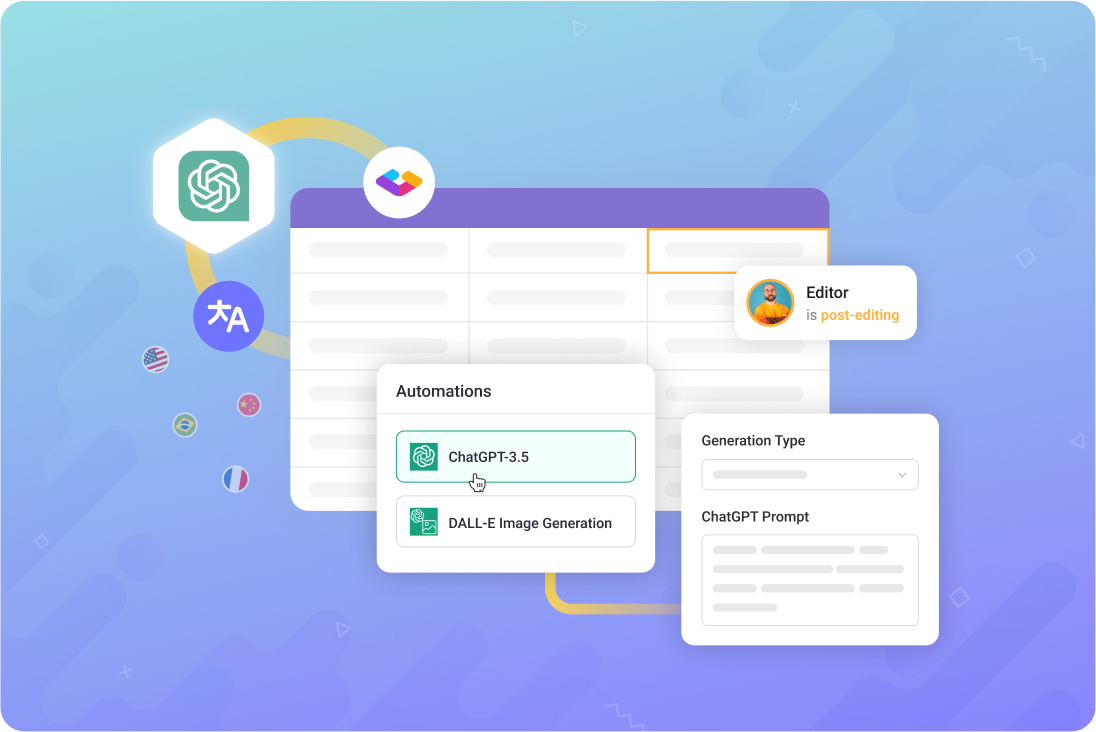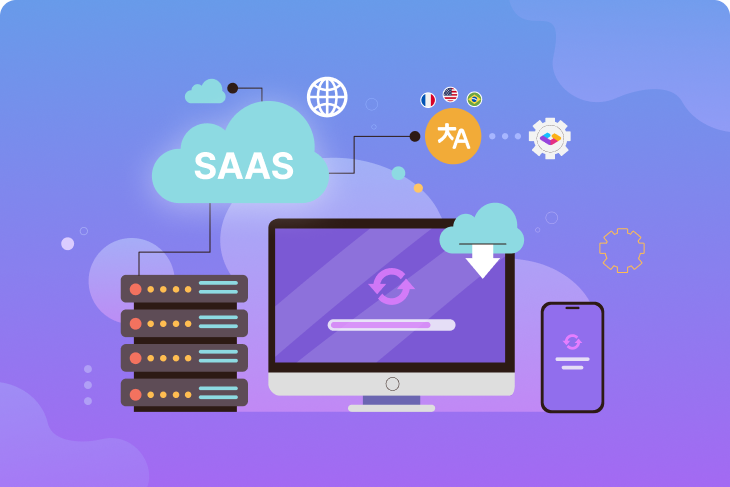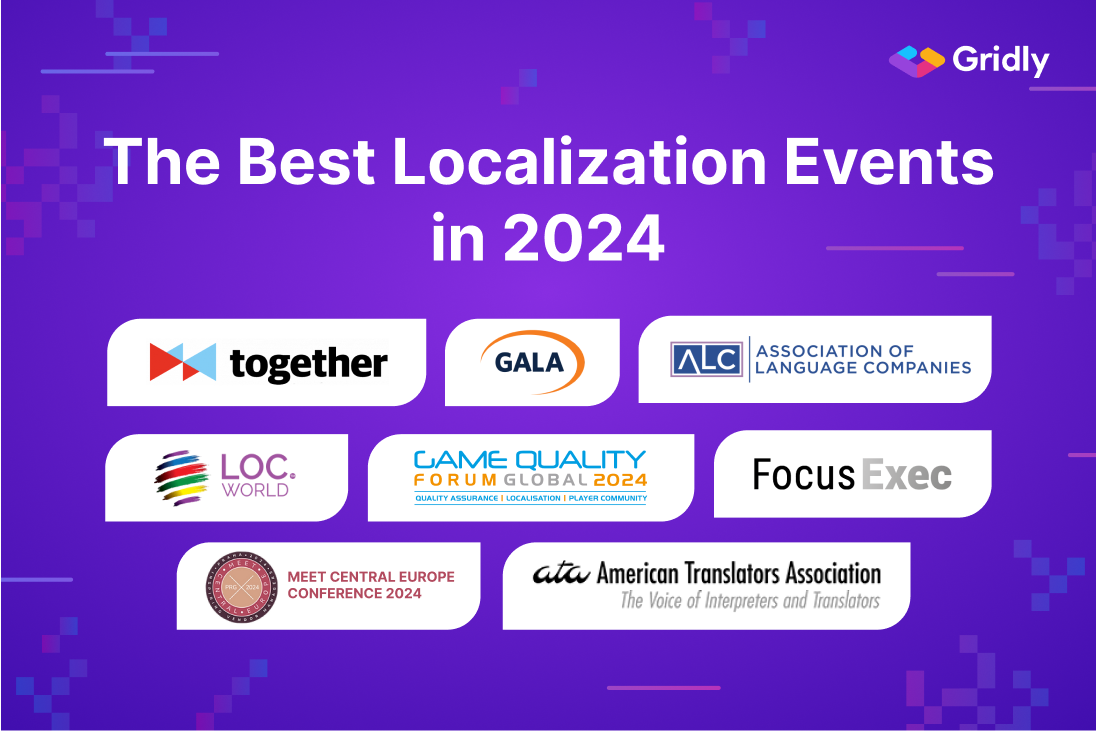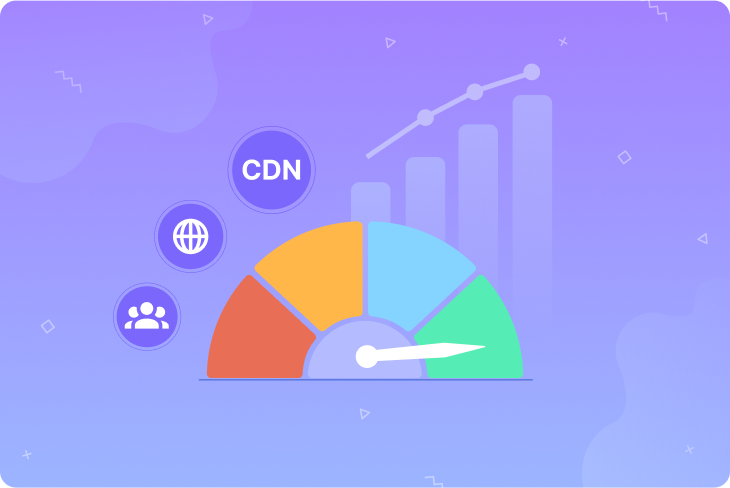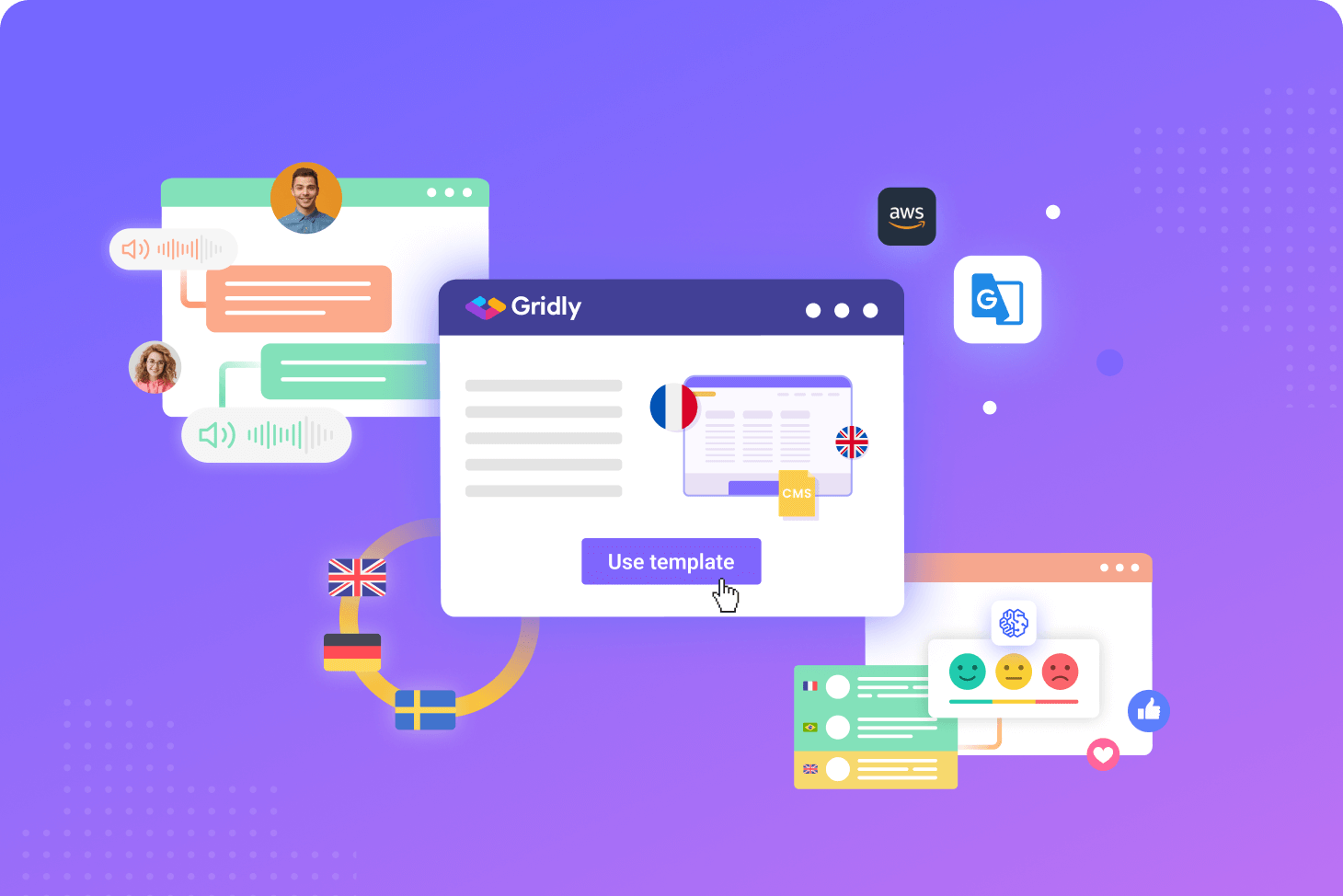Why choose ChatGPT for localization?
The localization industry is well familiar with the limitations of machine translation (MT) and AI translation tools since they’re not a new concept. The tools translate sentence by sentence without taking context into consideration, fail to provide relevant analogies for foreign cultures, misuse genders, or inappropriately use idioms in specific situations, to name just a few issues.
While machine translation tools based on neural networks like Google Translate, Amazon Translate, or DeepL are subject to these limitations, giant language models like ChatGPT can tackle these problems because they possess the ability to reflect relevant literature and context. Additionally, they can enhance the task of translating content by considering style, length limits, ignoring mistakes, or detecting unknown words.
When applied with this in mind, LLMs, such as ChatGPT, can already produce high-quality machine translation results and prove valuable in guiding post-editing efforts.
However, ChatGPT can’t generate translations in word-by-word mode. Therefore, giving them prompts like “Translate the following text <#>” will likely yield results similar to DeepL or potentially worse.
ChatGPT requires multiple instructions to scrutinize the text first, retrieve relevant context, come up with alternatives in other languages, and then translate using all this information. This process results in higher-quality outcomes.
It may seem daunting and impractical for large volumes of content where you can’t afford to chat with AI about every single string. But there’s good news. It can be automated, minimizing effort by applying necessary steps at scale and without manual intervention.
When considering these characteristics, Large Language Models represent tremendous opportunities for accelerating and increasing the productivity of content creation and localization workflows.
Ability to execute across the localization process
The impact on the productivity of ChatGPT is multiplied by its ability to be used for multiple tasks across the localization workflow. While AI translation tools are mostly capable of translating, ChatGPT can be applied in various steps of the localization process:
- Source text proofreading: ChatGPT can identify and correct errors or suggest improvements, ensuring the accuracy and quality of the original content.
- Pre-translation: ChatGPT can be employed for pre-translation tasks, generating initial translations instantly and providing a foundation for further refinement by human translators or checking the localization setup by developers.
- Alternative suggestions: By leveraging its vast language knowledge, ChatGPT can propose different phrasing or wording choices, enabling translators to explore various options and select the most appropriate one.
- Post-editing preparation: ChatGPT can assist in the preparation of post-editing tasks. It can help identify sections of the translated content that may require additional attention or refinement, helping post-editors determine what to focus on.
- Content generation: ChatGPT can be utilized for content creation during the localization process, such as materials for translators, product descriptions, or user interface elements, reducing the time and effort required for manual content creation.
- Localization QA: Spell and grammar checks, length checks, missing tags, symbols, or special characters — all these can be analyzed by ChatGPT, which can then also suggest improvements in the output format that QA teams can easily incorporate.
Achieving meaningful results from ChatGPT
To obtain meaningful results for the use cases mentioned above, it’s essential to provide a comprehensive input, so-called “prompt”. The prompt should specify what needs to be done and in which context, and it should also describe how the output should look as specifically as possible.
Think twice: define both input and output
To achieve specificity in the task that should be accomplished, you can add a perspective or contextual background. For example, “proofread from the linguistic perspective”, “take the role of a professional grammar corrector”, “avoid changing meaning as much as possible”, or “identify idiomatic phrases and provide an alternative”, can be effective.
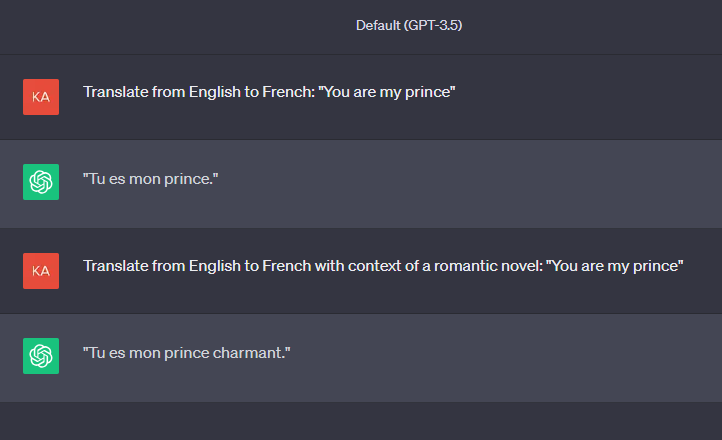
Another fundamental dimension of providing good input for ChatGPT is adding context for the translations, or any additional related information, such as terminology, guidelines, or the base text used for creating the input prompt. These could be even web pages, docs, etc. Of course, here it depends on the capabilities of your working interface with ChatGPT.
The specificity in how the output should be generated then helps with further working with the results effectively without additional steps, such as formatting or separating suggestions from explanations.
ChatGPT prompts for localization
Now the question is, how to put together these super prompts capable of producing valuable results? One thing that comes to mind is that “there must be something already”. Uncle Google can help here. Indeed, there are tons of prompt databases, and it might be good to browse through them for inspiration or to get the hang of how prompts can be constructed.
But a more potent and usually more efficient approach is creating your own prompt and iterating until you’re satisfied with the quality of results.
What should you write in the prompt?
The more descriptive and instructive your prompt is, the better the output you can expect. Here are some considerations of what a powerful prompt should include:
- Setup instructions: Provide relevant background context or foundational details about the topic, the desired tone, style, or audience. The more you can narrow down the requirements, the more tailored the response will be.
- Desired Action or Intent: Clearly state what you want ChatGPT to do. Whether it’s translating a phrase, proofreading source text, or generating creative content, be explicit about the desired action.
- Action Description and Entities: Specify any additional guidelines for the desired action. This can involve providing examples, specifying the format, or even suggesting specific words or phrases to use. The more specific you are, the more control you have over the output.
- Relevant Contextual Details: If applicable, provide any additional relevant details or circumstances that might influence the response, such as specific context for a translation task. For example, if you’re translating a phrase from a romantic novel, mentioning this specific context will impact the output generated by ChatGPT.
The key is to combine these types of information effectively. For example, Gridly provides a spreadsheet-like interface where you can input all the necessary information into columns and concatenate them into a prompt that matches your purpose. This way you can then play around with parts of the prompt and even change them dynamically.
Iterate your way to great ChatGPT results
Creating good prompts is one part of the process; equally important is testing and optimizing them for high-quality results. Run a prompt on a small but diversified sample of your content, then check the results, modify the prompt, and then run it again on a larger sample.
Within Gridly, you can use Views to facilitate these iterations. You can create a specialized view in which you’ll include records for testing ChatGPT prompts. Depending on the view filter, records can be added to a view by selecting a checkbox or by having a specific value.
Prompt engineering tactics: chain of thought
During testing, explore various tactics to ensure the best results. One effective approach is to break a complex task into smaller ones or add additional tasks that lead to better results, such as creating and analyzing alternatives. This method when you break a complex task into smaller ones is called a chain of thought.
In this case, ChatGPT is prompted to produce intermediate reasoning steps before delivering a final answer to a multi-step problem like translation. These steps can involve analyzing source text for idiomatic expressions or identifying cases where gender is not clear.
The results produced by ChatGPT can be then used as input for other prompts. In Gridly, it’s possible to have separate columns for the intermediate/reasoning steps. Additionally, the prompts can be divided into more prompts and then run consecutively within an automation workflow.
Prompt engineering tactics: few-shot prompting
Another tactic capable of yielding great results for certain use cases is using examples of the desired output within the prompt, known as few-shot prompting. Examples can be part of the prompt or retrieved from a database, document, or even a Grid in Gridly. This approach helps improve the accuracy of results as ChatGPT considers both the query and the examples.
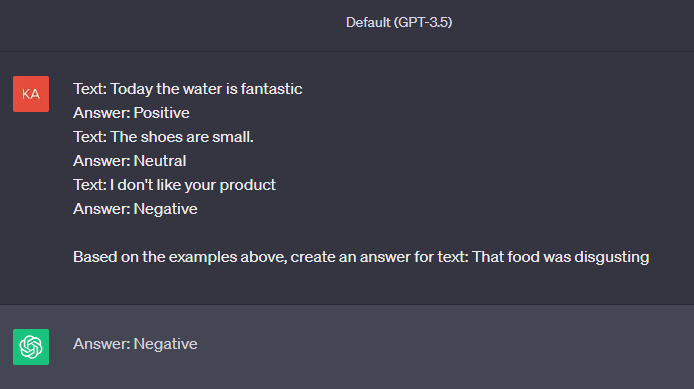
Tuning the model: temperature and presence penalty
Using OpenAI LLMs through API instead of just the standard browser interface offers more control over the model’s behavior and enables you to leverage parameters that are handy for localization.
For example, you can set up the model’s temperature which determines whether the responses will be more creative, random, and diverse or more conservative, common, and predictable. While for creative writing or copywriting, you’ll utilize higher temperature values, for cases like grammar check, summarizing, shortening, or spell checking, you want to use lower temperature values.
Another powerful parameter is the presence penalty, which determines how closely the model adheres to the input text. Positive values encourage the model to introduce new vocabulary, while negative maintain consistency with regard to the input.
When writing a poem you might want to use a positive number for the presence penalty but for translating, you should stick with values close to the bottom limit to maintain the meaning of the original text as much as possible.
What to be careful of when using ChatGPT
While ChatGPT can be a powerful tool for generating human-like translations, there are certain areas where it’s better to think twice before using it:
-
Post-editing: Even though the results generated by ChatGPT can be pretty accurate when using it for translation and following the techniques described above, it doesn’t eliminate the need to manually review the text and ensure that everything has been translated correctly.
Include linguists in your ChatGPT localization workflow and use their corrections in the prompts, that you’ll run repeatedly on bigger and bigger chunks of text. Lack of testing and absence of correct prompting will yield poor results that will then need to be largely edited or even fully retranslated. -
Data Security: When using ChatGPT(or ChatGPT Plus) through the browser interface provided by OpenAI, data is collected and stored by default. This might create concerns about Data Security Management within your company when ChatGPT is used on your company data.
Opt-out options are available, but these are only supported for business subscriptions accessing the service through API. This is also the case of Gridly where no data is stored by default. -
Costs: Although the ChatGPT 3.5 model is currently free of charge, this applies only to access through a browser using OpenAI’s chat interface. Implementing ChatGPT, even the 3.5 model, into your workflow or existing tools means you would need to access it via API and this is paid access.
OpenAI uses a pay-as-you-go business model for all their language models which means you pay for the number of words, or more precisely tokens, in your prompt (input) and also the volume of text generated by the model (output). Therefore testing makes even more sense before applying prompts to bigger volumes of text.>> How you can convert the number of characters/words into OpenAI tokens
-
Knowledge Cut-off: ChatGPT has a knowledge cut-off and might not be up-to-date with the latest developments beyond its training data. GPT 3.5 (the current model powering ChatGPT(9/2023) is up-to-date until September 2021, while GPT 4.0 (powering the paid version ChatGPT Plus) extends until the end of 2022.
How to get started with ChatGPT
The simplest and easiest way to start with ChatGPT is to go to the basic chat interface that OpenAI provides for free and start with the initial testing of prompts on a couple of strings to get the hang of how ChatGPT works.
However, the real deal comes with using ChatGPT where your content is stored or localized to avoid moving content back and forth between and start leveraging its results in your workflow right away.
This is possible with Gridly, which gives you a convenient way to run prompts for ChatGPT or Dall-E (a model used for generating images) on selected content, collect responses in your Grids, and work with them instantly.
You can configure an action within an automation workflow that will run a desired prompt. Within the prompt, you can refer to data or content stored in Gridly to provide more context or examples. Then you just choose a column where the results should be received.
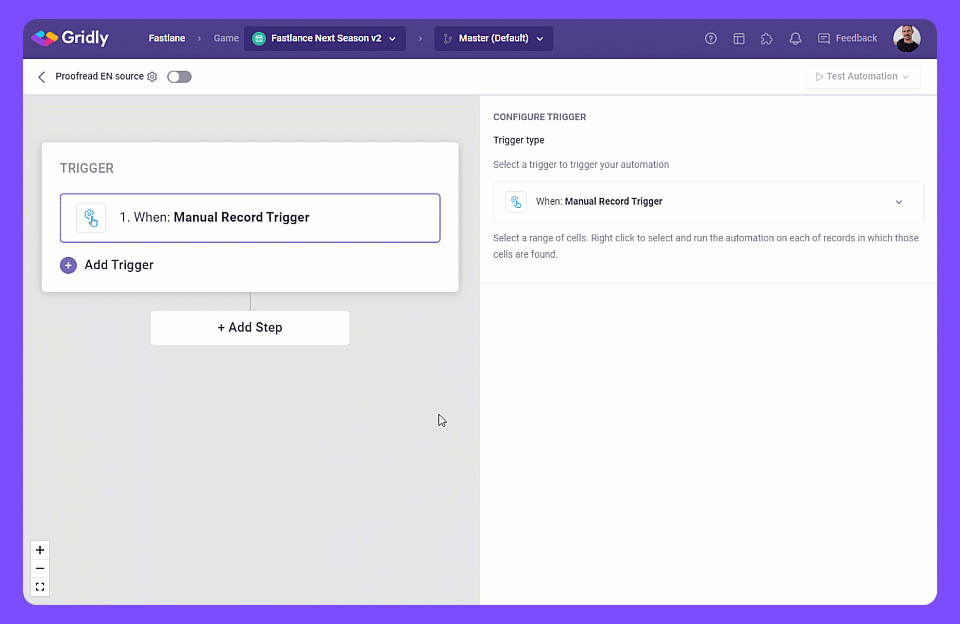
You can combine multiple actions or prompts for ChatGPT and use multiple columns to work with results. Therefore, you can leverage the chain of thought prompting method or easily separate AI-generated results from human-generated ones.
Automation workflows can be applied fully automatically or manually on a group of records (rows) that can be put together by using filters and views. Thus enabling you to test on small chunks of data and then roll out to bigger volumes when you have the confidence.
>> Learn more about how ChatGPT and Dall-E work in Gridly
Let your translators work with ChatGPT with ease
The automation workflows with ChatGPT actions triggered on selected content is a solution capable of working with large volumes of data. But what if you are a translator and want to work string by string and also leverage the help of AI?
For this purpose, Gridly offers an AI translation add-on that helps generate a particular string without the need to formulate any prompt. The prompt is already embedded in the add-on and the GPT model on the background is fine-tuned for string translations. Translators just click on the button “Translate with AI” and instantly obtain results they can use.
The add-on can also use ChatGPT to rephrase, shorten or correct your text, and come up with various suggestions. Translators can do this simply by clicking on action buttons without the need to create any prompts.
>> Learn more about AI-assisted translation
Don’t let the opportunity slip away
ChatGPT and other large language models represent an opportunity to transform localization workflows by automating time-consuming tasks, expediting turnaround times, and enhancing output quality.
When set up properly with thoughtful prompts and ample context, ChatGPT can produce high-quality machine translations with an understanding of nuance, culture, and style. The capabilities for translation, editing, QA, and more create productivity gains across the whole localization workflow.
With the right strategies, localization teams can harness this powerful AI technology to achieve significant time and cost savings.
